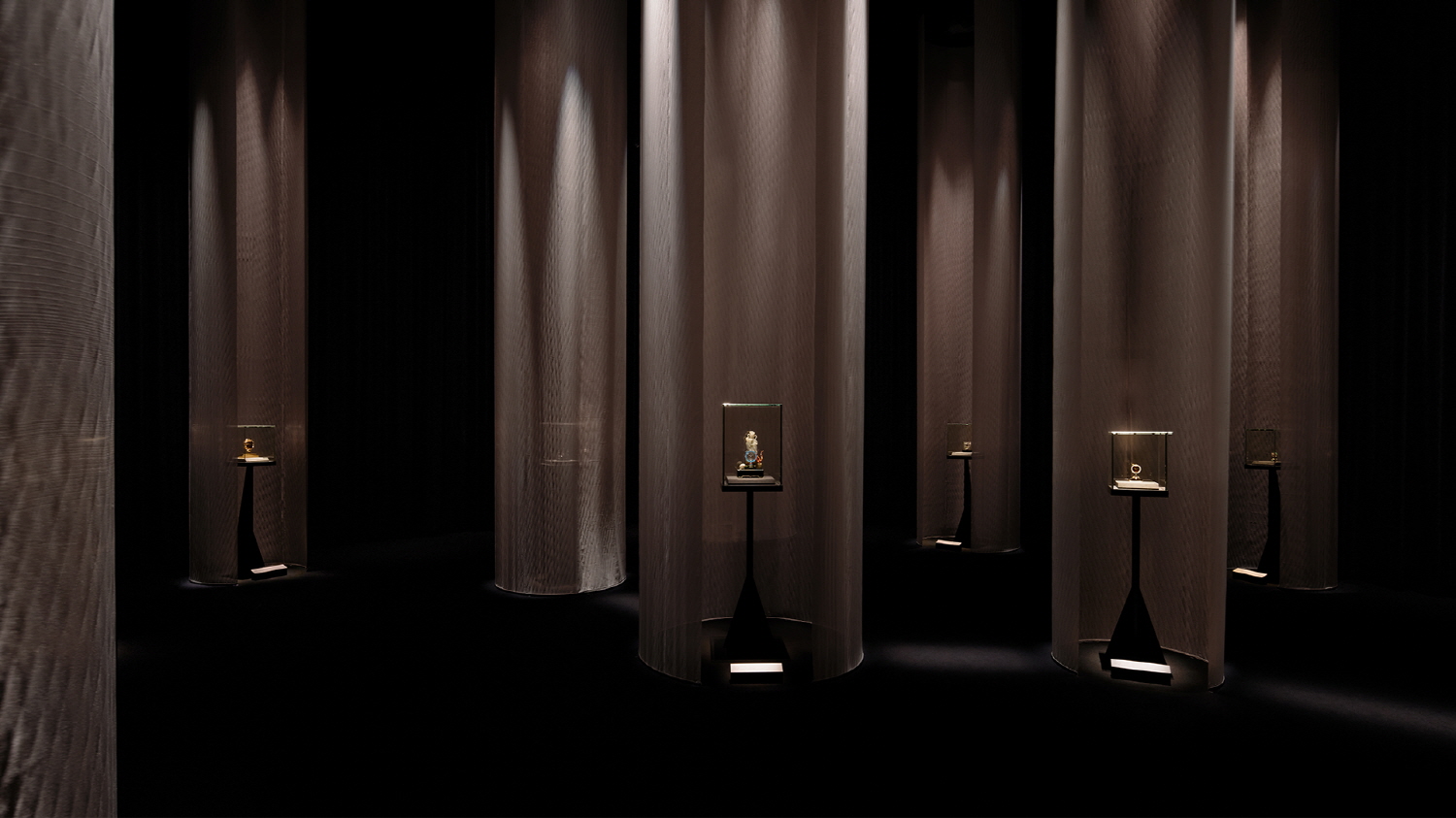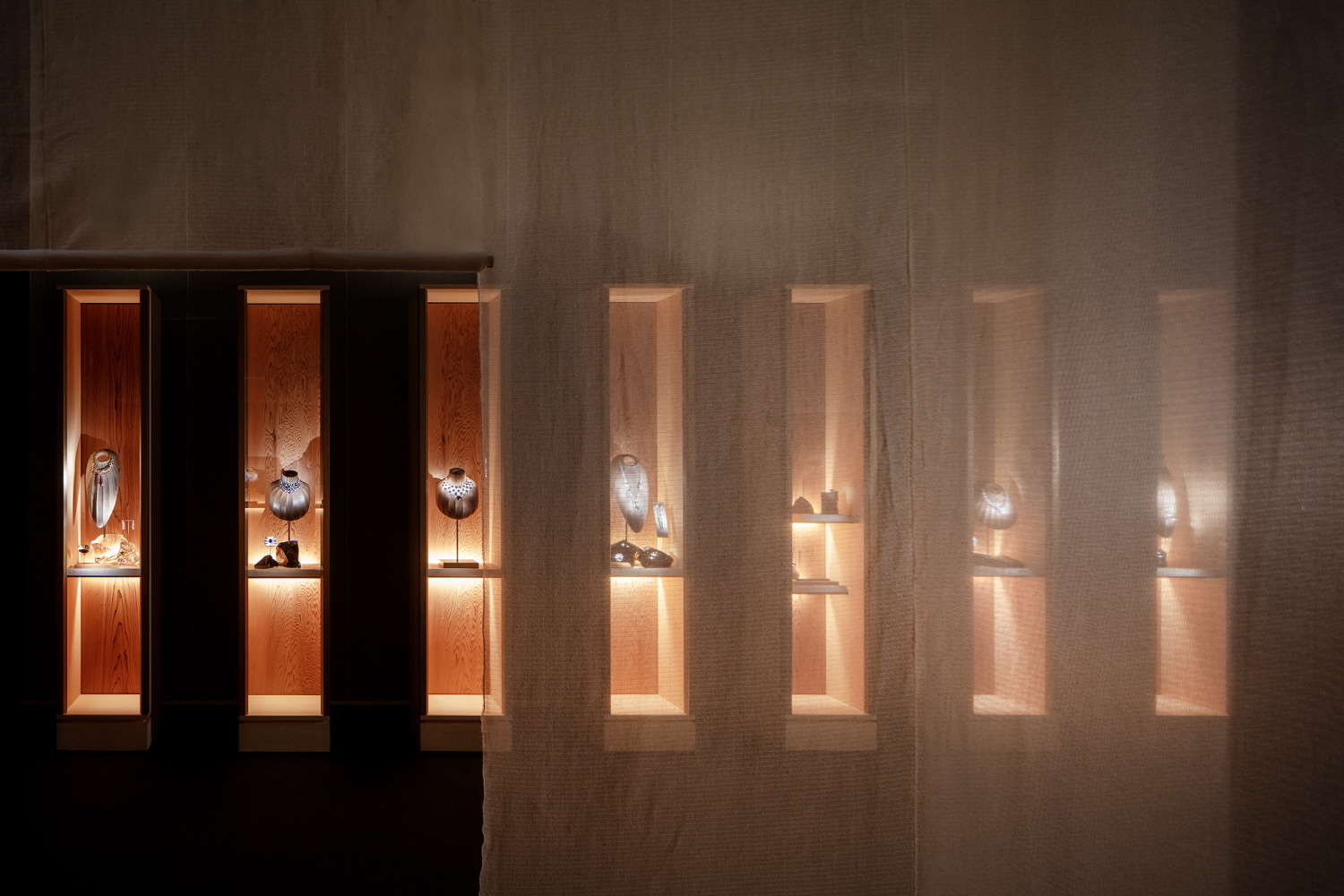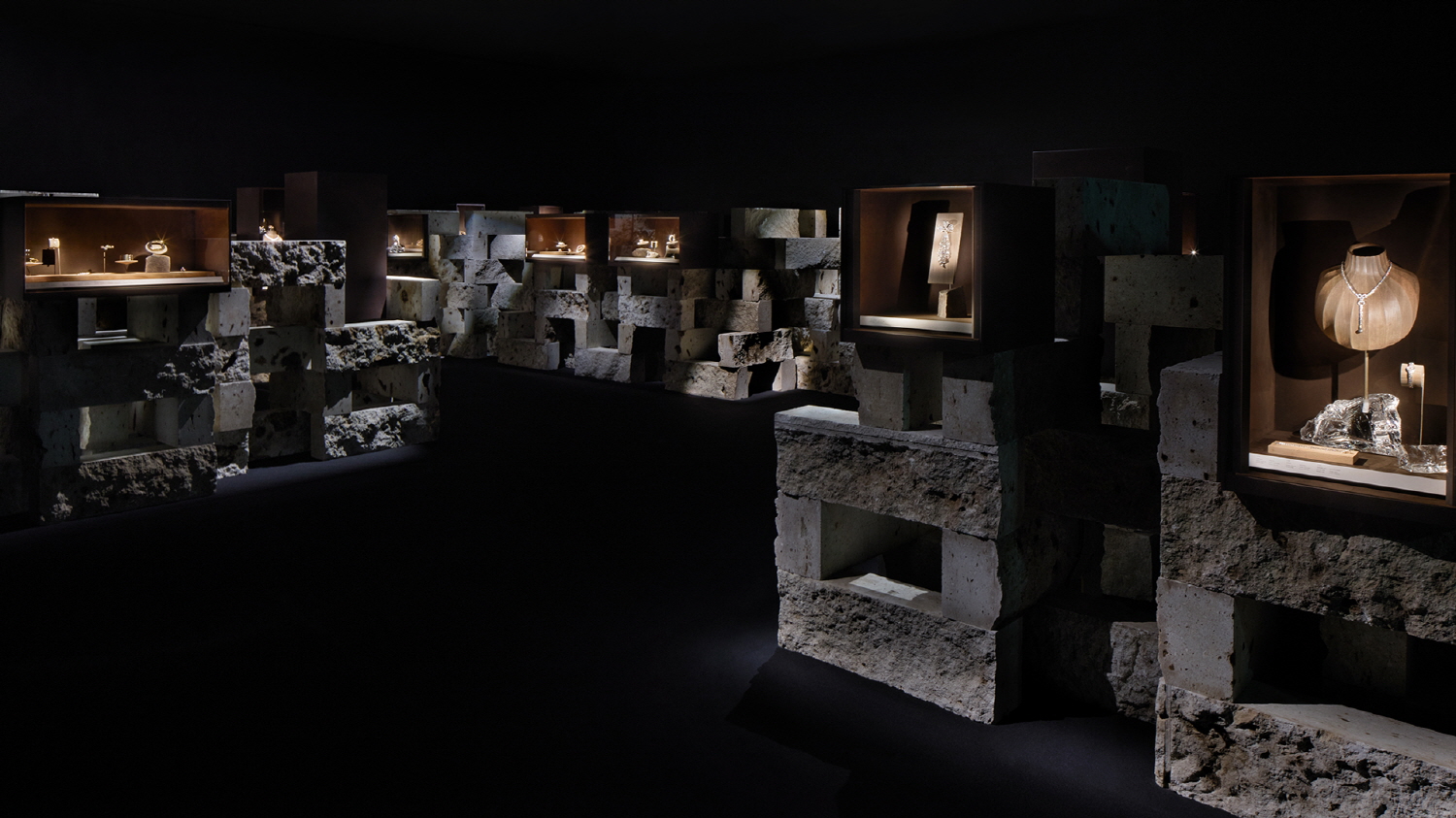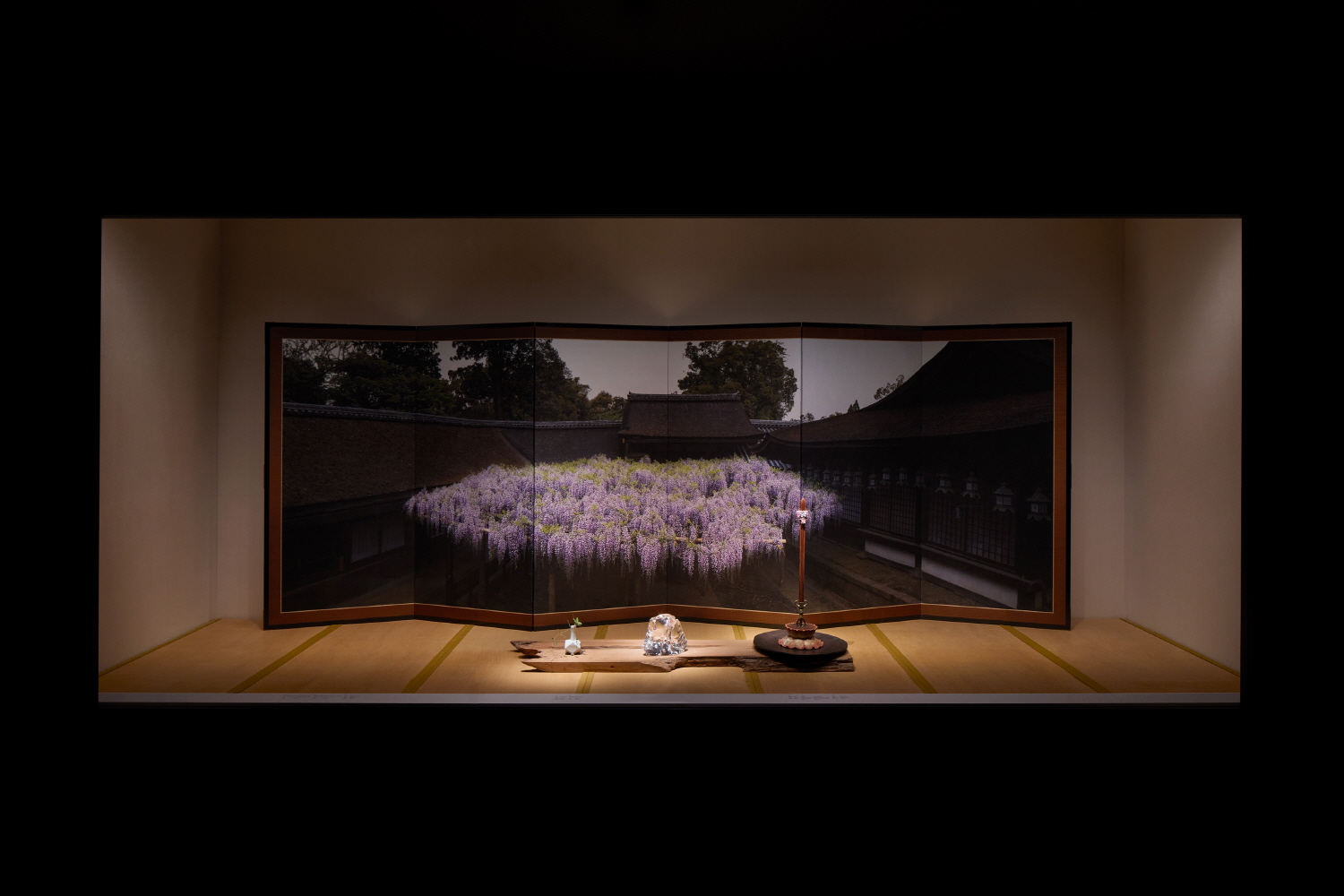SPACE Jun 2024 (No. 679)

Exhibition view of ‘Prologue: Space of Time’ / Image courtesy of Cartier / ©Victor Picon
Stones which crystalise in the ground are transformed into jewels in the hands of craftsman who amplify their beauty. The timeless value of the jewellery in which they ultimately reside derives from the vast amount of time that it takes for nature to crystalise and from the time it takes for craftsman to skillfully enhance this beauty.
‘Cartier, Crystallization of Time’ is the 41st exhibition to introduce Cartier’s works worldwide, and was planned as an international touring exhibition beginning at The National Art Center, Tokyo in 2019. Curated by Motohashi Yayoi (professor, Kyoto University of the Arts), this exhibition especially aims at revealing the modern designs of Cartier by featuring Cartier’s works from 1970s and onward. Collections of about 300 pieces, including private collector’s items that have not yet been revealed to the public, can be explored at this exhibition.
The design of the exhibition hall was performed by the New Material Research Laboratory (co-principals, Sugimoto Hiroshi, Sakakida Tomoyuki). The New Material Research Laboratory is an architectural design office that explores the potential of old materials guided by the philosophy that ‘old is new’ and honours architectural works that preserve and hone the skills and knowledge of professional craftsmanship. Unlike Cartier’s previous Japanese exhibitions, which were held in places with distinctive characteristics such as temples and Western-style buildings, the New Material Research Laboratory had to organise this exhibition, which was expected to be held in the context of different cities, within a white cube. In this context, the New Material Research Laboratory proposed a design adopting the concept of showing the future through the exploration of the old, and attempted adding traditional materials that may show each countries’ time whilst also using Japanese materials. This was to reveal universal values of Cartier’s collection as a craft, not just a product, within a timeline that exceeds Cartier’s history. The old rocks and trees used in this exhibition not only mean that the jewels to stand out, but also helps spectators to imagine the span of time the trees and rocks had to withstand. For example, the jewellery in the exhibition is displayed on a torso that a Buddha sculptor carved out of Jindai, a tree that has been buried underground for more than a thousand years and has been carbonised.
The second venue for ‘Cartier, Crystallization of Time’ is Seoul. The exhibition is held at the Dongdaemun Design Plaza (DDP) from this May 1 to June 30. For the Seoul exhibition the New Material Research Laboratory collaborated with ONJIUM (principal, Hong Seokhyun), a Korean traditional culture research lab supported by Joongang Hwadong Foundation, to explore Korean materials.
The exhibition is comprised of a total of four section. When first entering, ‘Prologue: Space of Time’, Time Reversed (2018) is on display. This enormous clock that solely stands in the light of a dark space, is an artwork designed by Sugimoto, restructured so that the clockhands to go backwards in time. As visitors watch the grandfather clock spinning in reverse while making a range of mechanical sounds, they move onwards to a point in the exhibition where a mystery clock and prism clocks are displayed to bring the concept of time to mind. When opening another door, a sparkling fabric emerging from the ceiling encompass each art piece, creating a landscape that looks like pillars of light. The fabric is made by restoring the weaving pattern of the traditional Japanese fabric, ra (羅).
In ‘Chapter 1: Material Transformation and Colors’, one can meet Cartier’s collections that developed new designs by boldly introducing platinum, which was originally an industrial material, into jewellery and by expanding the use of materials; from hardstone, lacquer, enamel, and petrified wood. The Korean traditional ra (羅), structuring the exhibition space, was specially made by ONJIUM and is suggestive of a faint fog. Through ONJIUM’s proposal, Sakakida passed on his pleasure in the coincidental discovery of ra (羅) as common ground between Japanese culture and Korean culture.
‘Chapter 2: Forms and Designs’ puts together collections that capture jewellery’s essential form and sphere, movement, architecture, and industry. Oya Stone (大谷石) is used in the exhibition hall of Chapter 2. The Oya Stone excavated from Utsunomiya in the Tochigi Prefecture in Japan starting from the 15th century, has historically been used as an architectural material, and became well known for its use by Frank Lloyd Wright in the New Imperial Hotel (1913 – 1923). The New Material Research Laboratory selected this stone due to the length of time that can be seen through the rough and porous surface created by the hardening of magma. Each piece is set on a wall made of floating rectangular Oya Stones. This creates a sense of being an explorer discovering gems in a cave.
‘Chapter 3: Universal Curiosity’ exhibits Cartier’s collection based on their curiosity for the cultures around the world that transcend eras and national borders. Other than the mentioned exhibition halls above, Korean and Japanese antiques and artifacts and Cartier’s works are shown in between each chapter as a highlight of the exhibition, ‘Treasure Pieces’. For the ‘Treasure Piece’ exhibition, Sugimoto carefully selected historic pieces from his personal collection and the collections of Korean antiquarian art collectors that met the exhibition’s themes. In addition, a unique Korean beauty was added through the use of old Korean jangpan by ONJIUM in the areas where ‘Treasure Pieces’ are exhibited.

Exhibition view of ‘Chapter 1: Material Transformation and Colors’ / Image courtesy of Cartier / ©Yuji Ono

Exhibition view of ‘Chapter 2: Forms and Designs’ / Image courtesy of Cartier / ©Victor Picon

Installation view of ‘Treasure Piece’ / Image courtesy of Cartier / ©Victor Picon





